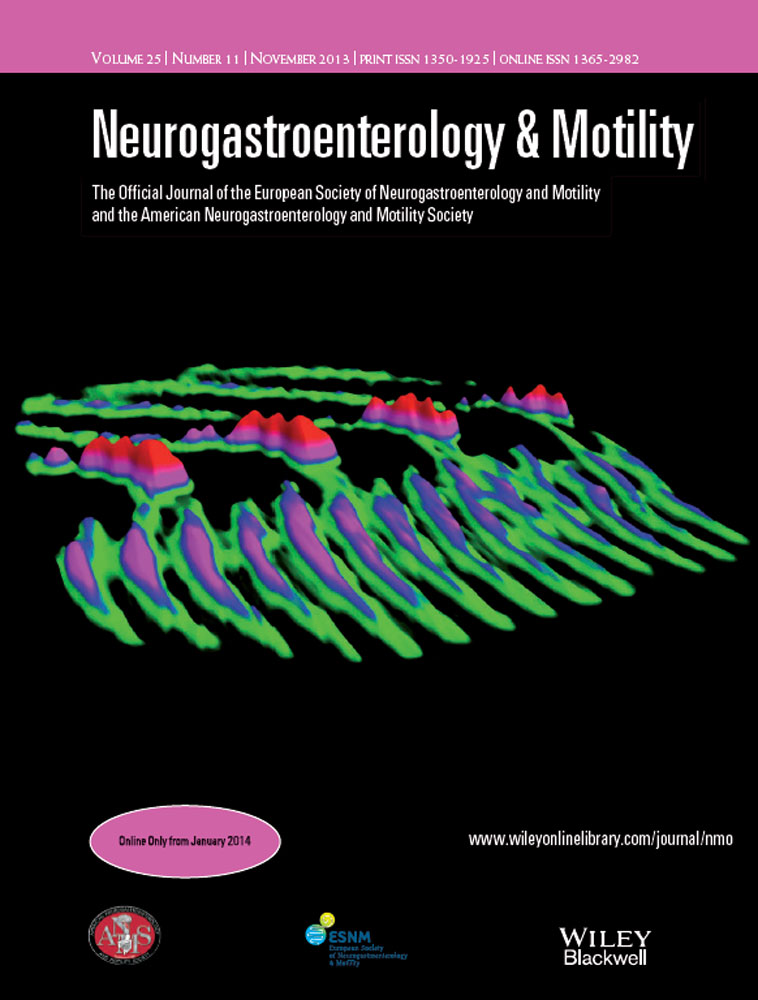Effect of surface sensory and motor electrical stimulation on chronic poststroke oropharyngeal dysfunction
Abstract
Background
Chronic poststroke oropharyngeal dysfunction (OD) is a common condition, leading to severe complications, including death. Treatments for chronic poststroke OD are scarce. The aim of our study was to assess and compare the efficacy and safety of treatment with surface electrical stimulation (e-stim) at sensory and motor intensities in patients with chronic poststroke OD.
Methods
Twenty chronic poststroke patients with OD were randomly assigned to (i) sensory e-stim (treatment intensity: 75% of motor threshold) or (ii) motor e-stim (treatment intensity: motor threshold). Patients were treated during 10 days, 1 h/day. Videofluoroscopy was performed at the beginning and end of the study to assess signs of impaired efficacy and safety of swallow and timing of swallow response.
Key Results
Patients presented advanced age (74.95 ± 2.18), 75% were men. The mean days poststroke was 336.26 ± 89.6. After sensory stimulation, the number of unsafe swallows was reduced by 66.7% (p < 0.001), the laryngeal vestibule closure time by 22.94% (p = 0.027) and maximal vertical hyoid extension time by 18.6% (p = 0.036). After motor stimulation, the number of unsafe swallows was reduced by 62.5% (p = 0.002), the laryngeal vestibule closure time by 38.26% (p = 0.009) and maximal vertical hyoid extension time by 24.8% (p = 0.008). Moreover, the motor stimulus reduced the pharyngeal residue by 66.7% (p = 0.002), the upper esophageal sphincter opening time by 39.39% (p = 0.009), and increased bolus propulsion force by 211.1% (p = 0.008). No serious adverse events were detected during the treatment.
Conclusions & Inferences
Surface e-stim is a safe and effective treatment for chronic poststroke dysphagic patients.




